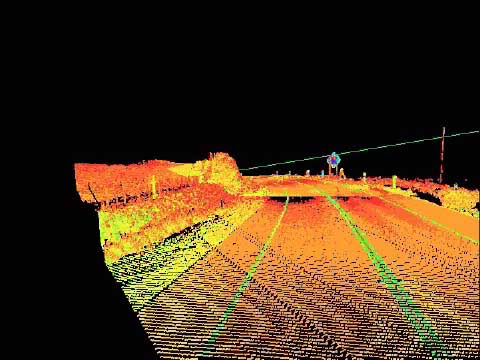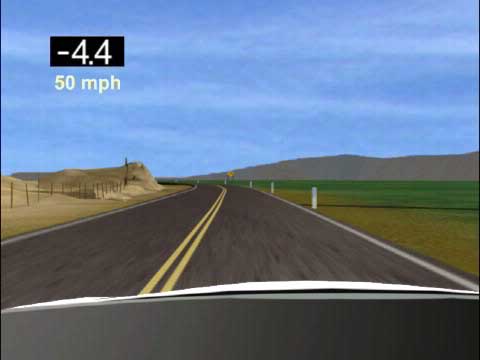Litigation and Negotiation Presentation Tools
How often have you spoken to a person, a jury or a group, all the while knowing, they just don’t get it? Poor communications are frustrating at best; in the worst of circumstances the results can be professionally and personally injurious.
Achieving Successful Outcomes: Present Case Facts or Communicate Case Facts?
"Presenting case evidence", the representation of clients in court has evolved with our understanding of human behavior and the decision making process. Consider that the term "to present" is defined as: to offer, acquaint, submit or state, while "to communicate" is interchangeable with: to be in touch, commune and be in contact with, a connection of ideas or concepts.
In the traditional sense, presenting case facts describes placing your case evidence on a table, illustrations on an easel chart, or via the floating words of oral delivery, leaving the outcome to destiny. Communicating case information connotes parties being in touch, communing and connecting with your information. It may sound like Mars vs. Venus, but clearly the odds for success increase with the sharing of the same perception of case facts.
Power Tools for Building a Strong Case
Forensic Animated Simulations
Forensic 3D or 2D animated simulations are dynamic graphical demonstrations created from empirical data and used as a medium to demonstrate accurately both civil and criminal actions and events. Converting multiple sources of highly technical and complex case facts into a dynamic visual illustration reduces the layperson’s struggle to comprehend unfamiliar concepts, techniques and processes. By reducing the technical learning curve, the individual and collective focus can be directed to the legal issues.
The Architecture
Just as the architect takes into account your housing or office utilities, desires and requirements before beginning design of a new structure, the forensic animator must first understand similar objectives before taking on a new legal project. The architect integrates the requirements of specialists such as electricians, plumbers, and framers to meet the building codes; similarly, the forensic animator works with specialists such as hydrologists, geologists and accident reconstructionists to collect, integrate and analyze the corresponding data and ensure the final product meets the federal and state rules of admissibility.
The Design
Steps involved in designing a forensic animation include:
- Understanding the objective of the demonstration, visualization or simulation
- Collecting all data to ensure thoroughness
- Evaluating the quality of the data
- Mathematically analyzing and integrating the data
- Identifying data that does not compute, replacing with valid data
- Establishing a working relationship with the experts and the attorney
- Determining a timeline for the stages of production and the end-date
The Production
Production requirements and steps are:
- Converting the data to a mathematical format
- Ensuring all actions follow the laws of physics
- Justifying the engineering designs
The Product
The product form can be delivered in the following formats:
- VHS tape
- CD
- Integrated into courtroom presentation software
- Standard size 8 ½" x11" hard-copy "frames" for distribution
- Enlarged "frames" for poster boards or wall displays
The Graphics
Forensic animations may include these graphic types:
- 3D modeling
- 3D animated simulations of events or actions
- 2D graphics and descriptive terminology
- Virtual terrain mapping
- Morphing from one data source to others
The Components
- Engineering design descriptions
- Architectural renderings
- Blueprints
- CAD prints
- Appraisal reports
- Survey scene diagrams and calculations
- Publicly available geographical data
- Topo maps
- Crime scene reports
- Photographs
- Expert witness reports
- Financial data
- Operations manuals
- Community, state or federal planning guides
- Public agency information
- Deposition video
- Medical x-rays and now,
Laser Scanning
Tools for Better Sites and Insights
Millions who suffer from poor vision have turned to laser technology to achieve improved visual acuity over the past decade. Now, engineers and surveyors are utilizing another adaptation of laser technology for scanning roadways, facilities and objects to achieve greater accuracy. Using the precision of a carefully focused laser beam, engineers can capture 3D spatial information of any object to .25 inch accuracy. Using a "point and shoot" method much like traditional photography, the laser can capture 1,000,000 precise data points in under 20 minutes. The resultant "point cloud" contains all spatial information and can be viewed from any angle immediately, including interactive 3D "fly-through" tours of the object or site.
From "ahh" to "ah ha"!
The "ahh" factor of a brilliant yet undecipherable point cloud becomes the "ah ha!" of comprehension when the data captured by laser scanning is converted to a forensic 3D animated simulation. Forensic animations require immense amounts of data to create accurate 3D models of a scene or object that can be observed from every viewpoint: a 360° fly-around, above and below the target or site, or split into small segments.
Traditional survey methods cannot compare with the volume and quality of information obtained by laser scanning. New software tools are being developed at a rapid pace to integrate the point cloud data into CAD programs for 3D modeling and animated simulations. Combining the improved accuracy of lasers with the accurate forensic 3D animated simulations is a terrific marriage.
Road Before

Road After

Utilities and legal case examples for forensic animations
Forensic 3D animated simulations have been used successfully for:
- eminent domain and condemnation case visualizations
- criminal actions or events as visual aids
- product liability demonstrations
- environmental damage and recovery displays
- medical and professional malpractice depictions
- biomechanical illustrations
- business law demonstrations of loss of goodwill
- construction defect simulations, accident recreations
Surprise Benefits
The primary benefit is increased comprehension and retention by a jury. Additional benefits that have been realized are:
1) identification of errors, miscalculations or inaccurate measurements by experts (when mathematical computations and computer overlays fail to mesh, it is possible to "back-in" to identify the problem)
2) the discipline of creating the case strategy before the weekend prior to opening statements, and
3) the ability to understand the strengths and weaknesses of your case through various recreations and visualizations
A Client’s Story
A Missed Opportunity, or "What a Difference a Day Makes"
"In preparation for a condemnation of a partial acquisition of an aerial easement for a freeway structure going over an auto dealer’s sales lot, the County of Alameda, through its legal counsel, became aware of 3D animation and the ability to demonstrate the "before and after" conditions. Using 3D animation, we turned one dimensional right-of-way drawings, construction plans, and aerial photos, (which can be confusing to a lay person) into a 3D visual representation. Given the magnitude of the dollar difference between the County’s appraisal and the owner’s, along with the impending trial date, the County decided to venture into this new technology to bolster its presentation to the jury and assist the County’s expert witness. A 3D visualization was created to illustrate what the construction would look like in the after condition.
On a Monday afternoon, a settlement conference was held with the trial judge that extended into the evening hours. Late in the evening, the trial judge pounding on both sides, effected a settlement. Keeping a prearranged meeting time Tuesday morning, the County’s appraisers, legal counsel, and myself viewed the 3D animation of the completed future construction . In unison, we concurred that if the days had been switched, we would have gone to trial, because the 3D animation made it graphically clear the County’s position was that the structure would have had minimal impact on the use of the property under the structure for parking, (either the display of vehicles for sale, parking, or other uses of the property). Hence, the opening statement – What a difference a day makes!
Recognizing that we have become a visual society, obviously, I have become a strong advocate of the use of 3D animation technology for the right-of-way professional in condemnation actions involving those complex partial takings. These are difficult to visualize from the plans, and clever wordsmithing from a defendant’s attorney can paint a bleak picture, translating into lost dollars. Conversely, if the 3D animation shows that the impacts of the project have a severe negative effect on a property, an agency can better access its position to effect a settlement in lieu of going to trial."
John Fenstermacher, Chief, Real Estate Division, County of Alameda, Public Works Agency, California
Before

After

Admissibility Issues
Federal and State Codes of Admissibility
Criminal law cases, accident reconstructions, product liability and property disasters such as landslides and floods have laid the groundwork for utilizing forensic animations in the courtroom. Although the demonstrative evidence is the responsibility of the attorney, successful forensic animators understand and comply with the issues of probative v. prejudicial demonstrations. Three issues that will prohibit an animation from being accepted are:
- Incorrect or unacceptable input data
- Inaccurate representation of the input data, and
- Non-compliance with FRE 402 and state admissibility rules
In People v. Hood, March 1997, 53 Cal. App.4th 965: 62 Cal Rptr.2d 137, the Court ruled that the prosecution was permitted to introduce a computer animation to illustrate the testimony of various experts. The trial court ruled that because the animation was illustrative in nature, it was not necessary to determine, as a prerequisite to admissibility, whether computer animation had gained general acceptance in the scientific community. (Superior Court of San Bernardino County, No. SCR 56936, Don A. Turner, Judge) Upon appeal of the case (in which both sides offered computer animations) the Court of Appeal affirmed the decision.
The Court of Appeal opined that computer animations were tantamount to drawings by the experts (from both sides) to illustrate their testimony. Moreover, the tests for new scientific techniques are not applicable to the functioning of the computer in creating the animations. (Opinion by Ramirez, P.J., with Hollenhorst and Richli, JJ.)
Probative v. Prejudicial
Head notes to People v. Hood
In a murder prosecution, the trial court did not abuse its discretion in ruling that the probative value of the prosecution’s computer animation, which was used to illustrate various experts’ testimony concerning how the murder occurred, outweighed its prejudicial impact. The animation was clinical and emotionless, and the trial court gave detailed instructions about how the jury was to utilize the prosecutions, and the defense’s animations. Classified to California Digest of Official Reports, Criminal Law § 289–Evidence–Admissibility–Prejudicial Matter–Computer Animation.
Choosing a Forensic Animator
Many animation companies produce dynamic graphics to illustrate new property developments, hotels, and resorts, which are visually stimulating and exciting to view. These may or may not be created from proven empirical data sources for every frame, and the producer may or may not have experience as an expert witness. Ensure the animator you choose has a thorough understanding of the legal requirements and expectations involved in creating forensic products. Also, ask expert witness providers for referrals and interview the potential animator to identify the rate of courtroom admissions vs. submissions.
Increase Comprehension and Retention of Case Facts
Studies have shown that we remember 80% or more of what we see, and 20% or less of what we hear. Many consider visualization to be a key component of human thought, which may have contributed to interchanging of the phrase "I see", with "I understand". Successful representation results in increased comprehension and retention of your case data as well as how all the tiles fit together to complete the mosaic. These can be "spoon fed" by converting the various forms of data to a simple visual format, for the jury to enjoy and understand.
TM
Precision Simulations, Inc., 1999The content of this article is intended to provide a general guide to the subject matter. Specialist advice should be sought about your specific circumstances.
